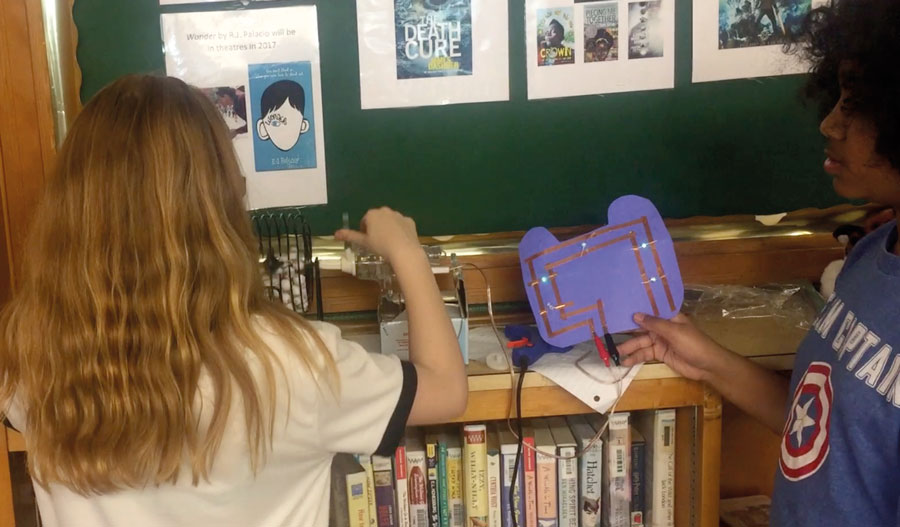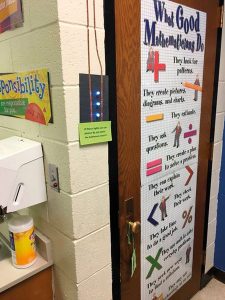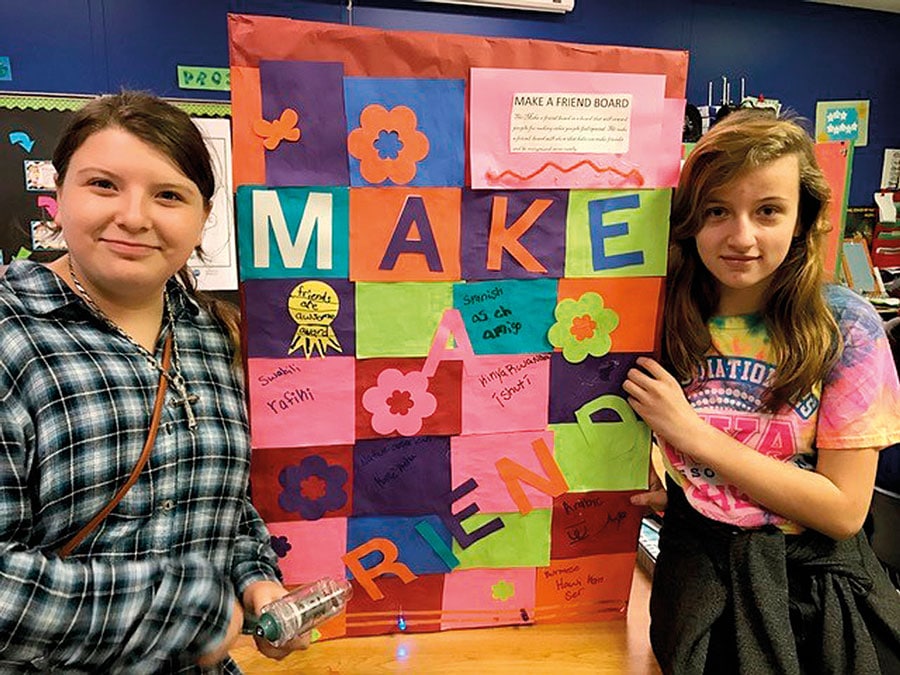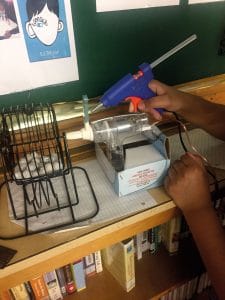I-Engineering: Middle-school engineering with communities
Research has shown that stereotypes regarding school subjects become ingrained while children are still under the age of 11 years; the idea that some subjects are for boys and others for girls or that some are interesting and cool and others are irrelevant and boring can become a reality in children’s minds early on at school (Moss, 2018). Science, technology, engineering and medicine (STEM) subjects fall particularly foul of this. Even when children are doing well in STEM subjects at school, there is little correlation between this and them going on to study or work in the STEM sectors. Perhaps this is not surprising: equity in STEM is yet to be achieved. Youth-of-colour as well as women remain woefully under-represented in STEM jobs in the real world leading to ‘identity gaps’ where female students or those from minority groups think STEM subjects ‘are not for me’ (Calabrese Barton & Tan, 2019). In addition, it has been noted that children do not often relate what they are learning at school to real-life scenarios. New and justice-oriented opportunities to engage in STEM are needed that centre and amplify the community wisdom and lived lives of youth so that they see their experiences reflected in STEM. One of the reasons for these discrepancies is a lack of teacher skills and resources; advice for teachers outside of the set curricula is scarce, as is funding for materials that might allow students to get a more hands-on education (Calabrese Barton, 2019).

Engineering and ethnography
So, what is the best way for teachers to approach subjects such as engineering in schools to ensure that all pupils are engaged? It has been suggested that a community ethnography approach to hands-on STEM would allow students to learn more about their community members’ wants and needs, leading to an understanding of why and how their own knowledge matters. In the context of a teaching method, a community ethnographic perspective on engineering would mean students could research, design and implement solutions to transform their own community (Tan, Calabrese Barton & Benavides, 2019). Engineering becomes a valued community skill, and the process of project-based learning encourages more equity-led teaching, where students learn from and with members of their own community to make it a better place together (Calabrese Barton & Tan, 2019). By integrating STEM learning with the everyday, students are more able to see the relevance of a topic and have confidence in their own abilities; they are able to see how the community value in designing and building a bridge or a dam is combined with STEM knowledge to solve problems that matter to people, problems that (with a new-found confidence in their capabilities) no longer seem so far removed from the lived world of an 11-year-old.

A community ethnography approach to hands-on STEM would allow students to learn more about their community members, wants and needs.
In addition, by asking students to look to their own community for puzzles to solve, teaching can be made relevant to current and generational concerns and issues. For example, looking forwards, one of the biggest challenges our future engineers are going to face is coming up with environmentally friendly and sustainable solutions to conundrums big and small that are localised in communities. Engaging in community ethnography research such as observation, interviews and surveys ahead of coming up with possible solutions to a group’s questions ensures that community concerns are taken into consideration and that students come up with realistic resolutions that are practicable in today’s world. Students get the chance to connect the science with real people and to reflect on their own personal contribution to measurable and tangible results.

I, Engineer
There is one project in the United States spearheading this approach to engineering teaching for middle school pupils. Funded by the National Science Foundation and currently run from Michigan State University and the University of North Carolina at Greensboro, the I-Engineering project works in partnership with schools to co-develop and implement energy engineering for sustainable community units. These units support students to come up with solutions to problems that matter in their local community. The pupils are taught about renewable energy systems, energy transformations, circuitry, engineering practices and community ethnography. In turn, the resources and lessons gained from this project can be used to support others creating further community units of this kind. The overall aim is to support minoritized youth in developing STEM knowledge and practices and engaging in productive identity work in engineering capable of making a difference in the world.

Engineering for sustainable communities expands what it traditionally means to be an engineer; as well as thinking about the technicalities of solving a particular problem, students are asked to focus on the needs and rights of a community when designing a solution. The I-Engineering project uses four principles to help guide this approach: 1) understanding that communities’ perspectives matter in design; 2) balancing technical dimensions with community needs; 3) helping others now and in the future; and 4) minimising negative environmental impact. Using these principles as a framework helps teachers to navigate from a topic (e.g. alternative renewable energy) to a problem space where students can design and test realistic tools based upon current knowledge, empirical investigation of technical and social dimensions and operational constraints and specifications (e.g. how to travel to a friend’s house when no parent is available to give them a lift). By incorporating community ethnography throughout the engineering design and implementation cycle the I-Engineering project has moved beyond traditional engineering and scientific teaching and combined the technical with the social, challenging pupils to think about the trade-offs and synergies between the technical aspects of a design and the social implications of that solution (Tan, Calabrese Barton & Benavides, 2019: Schenkel, Calabrese Barton & Tan, forthcoming).

By incorporating community ethnography throughout the engineering design and implementation cycle, the I-Engineering project has moved beyond traditional engineering and scientific teaching.
Over the past several years, I-Engineering designed and prototyped two design challenges intended to engage middle-school students. The challenges were piloted within after-school clubs, summer camps and middle-school classroom contexts. ‘Electric Art’ involved making an original light-up greeting card for a friend or family and ‘Sustainable Classrooms’ aimed to come up with ways to make the classroom a more sustainable environment. The challenges and the materials needed to facilitate the activities have been carefully planned by the project leaders in order to ensure the engagement of minoritized youths for whom equitable opportunities to learn and take part in engineering are typically supressed by cultural norms.

‘The Occupied’
At one school, sixth graders taking part in one of the challenges aimed to solve the problem of bathroom bullying in an episode of justice-oriented STEM. In this particular school, each of their classrooms had an individual bathroom at the back of the classroom itself, but there was no lock on the door. Some children were opening the door on other pupils while they were in there, claiming they ‘did not know’ it was occupied. Despite their teacher’s scepticism, the three students who came up with the idea worked towards new levels of technical and social understanding with their peers and teacher and designed a solution: ‘The Occupied’. The solution comprised of solar-powered LED lights which indicated that the bathroom was ‘occupied’. They were installed in a parallel circuit fixed to the wall outside the toilet door and were activated by the light switch inside the bathroom. The children had been anxious about the bathroom bullying day to day. Now they are confident that ‘The Occupied’ system will help their community, especially the boys (who often didn’t have someone to watch the door for them), and it has helped them find their STEM identity. ‘The Occupied’ is only one of many successful engineering solutions to social problems designed by the students taking part in the project; a ‘Make A Friend’ board to encourage friendships between recent immigrants and citizen youths at a school with a high refugee population and a portable ‘Light Up Desk’ system to quickly locate items stored under pupils’ school desks and prevent disciplinary action for student tardiness are other notable examples.

Engineering the solution
By integrating community ethnography with engineering; by holding the stance that community knowledge is a valuable part of disciplinary knowing; by supporting multiple forms of and purposes for interactions and interactional spaces for students, teachers and community members; by helping teachers to notice, value and respond to students’ cultural knowledge as an important form of epistemic authority; and by providing the tools which position students and teachers as co-learners of community concerns, the I-Engineering project has begun to revolutionise the education of middle-school engineering.
Personal Response
Can you tell us a bit more about the feedback you have had from pupils who have taken part in the project?
Here is a selection of comments from some pupils who’ve taken part:
“People are like, I can’t believe 6th graders did that. They just can’t believe it. . . And it shows we’re smart, and we can stick with it.” Analeigh, 6th grader
“I feel like I can teach, and if someone asks me about LED lights, series circuits, simple circuits or parallel circuits, I can help them. [When I give my electric art card to my mom] she will think that I am very creative, very smart, and very thoughtful that I did this for her. And she’s going to think I’m successful.” Layla, 6th grader
“I-Engineering is very cool because you actually got to make something that works to solve a real issue, we actually MADE this.” Allegra, 6th grader.